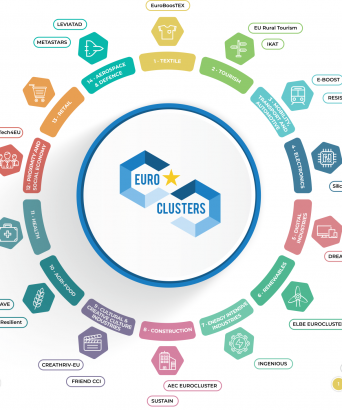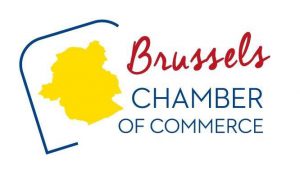Because of its associated link with these two big brands, the collaborative economy is quite controversial but also often misleadingly understood. Initiatives currently under development in Brussels show that this economy can also have a positive societal impact. The European project EU-GIVE – of which Enterprise Europe Brussels c/o hub.brussels is a partner – precisely aims at fostering the international development and replication of such initiatives around the social and sustainable economy.

What is the collaborative economy?
The collaborative economy (also often called sharing economy) is trendy. However often without a clear understanding of this term. In its communication of 2016, the European Commission
- defined it as “business models where activities are facilitated by collaborative platforms that create an open marketplace for the temporary usage of goods or services often provided by private individuals.”
- underlined that “The collaborative economy involves three categories of actors:
- (i) service providers who share assets, resources, time and/or skills — these can be private individuals offering services on an occasional basis (‘peers’) or service providers acting in their professional capacity (“professional services providers”);
- (ii) users of these;
- and (iii) intermediaries that connect — via an online platform — providers with users and that facilitate transactions between them (‘collaborative platforms’).”
- and noted that “ Collaborative economy transactions generally do not involve a change of ownership and can be carried out for profit or not-for-profit.”
A key element should be remembered: the enterprise or initiative is not just selling a product or service but creating an open network of users, which connects them to jointly produce value in a horizontal logic. The creation of this network often goes through the setting-up of a web-based platform but this is only a mean to an end and not the only one.
New business models have been designed involving individuals such as:
- P2P (Peer-to-Peer) or C2C (Consumers-to-Consumers)
- but also C2B2C (C2C with the intermediary of an enterprise) B2B2C (B2C with the intermediary of another firm)….
Moreover, the intermediary is playing from a smaller to a larger role:
- It can be a simple technical intermediary (like an electronic wall of small adds)
- Or creates a new marketplace (where prices are determined by sellers and buyers)
- or even influence the prices and the conditions of the exchange.
Moreover, as pointed out by Aurélie Duthoit (cf. sources below) the collaborative economy appears in a way at the crossroad of 3 other economies but should not be mistaken for them
- the circular economy (for instance by transforming your waste as resources for others)
- the local economy (for instance short circuits)
- and the service economy based on functionality (you do not buy a good or a service but the right to use it for a defined period).
The collaborative economy can thus potentially disrupt the conventional economy, as shown by AirBnB and Uber. Nevertheless it can also generate new dynamics involving individuals “prosumers” but also citizens to generate a positive societal impact.
Brussels trends
Being attentive to the positive societal impact in our region is one of the key principles of the EU-GIVE project in which Enterprise Europe Network is involved as part of the Enterprise Europe Network (EEN). The EEN helps businesses innovate and grow on an international scale. It is the world’s largest support network for small and medium-sized enterprises (SMEs) with international ambitions.
EU-GIVE is committed to disseminate and raise extensive awareness of the potential of collaborative economy and prepare entrepreneurs to manage all the implications of the novelty that is has introduced. The project targets notably Small and Medium Enterprises and social enterprises. This pilot project is organised in three phases over two years.
In 2018, the first phase of the project aimed at producing a mapping of the existing initiatives in the regions and countries involved. The mapping consisted of a questionnaire sent to a targeted list of initiatives and stakeholders. Moreover, one conclusion of our mapping is that such initiatives exist in Brussels and maybe comparatively more than by some of our partners. They covered very different sectors and are governed by various motivations. In the practice, it is not always easy to apply the definition to decide whether an initiative is involved or not in the collaborative economy. As the benchmarking with our partners is still underway, it is too early at the stage to quote names but the following broader trends can be identified:
- Beside the big players of the sector, smaller competitive initiatives are being developed at a regional scale, for instance local cooperatives for bike delivery. If entrepreneurs want to sail in this new dynamic, the failure of enterprises like Menu Next Door recently reminded us that this is not an easy slot. One of the key stake of the development of the collaborative economy is reaching a critical mass allowing a broadening of the network but with the risk of losing the initial local and societal anchorage.
- The service economy based on functionality and the collaborative economy are particularly booming in the sectors of mobility and urban logistics. It can be seen in the development of free floating, shared cars, shared deliveries…
- Platforms can help you sharing objects among peers, like tools, or put your in connection with local suppliers from your neighbourhood.
- The IT sector, flourishing in Brussels, contributed to the development of the online platforms but some local initiatives are also doing without.
- The social sector is not behind. Coop City, the Brussels centre for social entrepreneurship and cooperatives answers the need for support to move toward cooperative models and social enterprises which can takes other legal forms. In particular, the health sector seems eager to develop new collaboration logics as shown by the 2017 projects from the Pollinize programme of Coop City.
- New legal forms are also emerging like the accredited platforms.
- Behind the economic motives (economies of scale, generation of new revenues….) and the technological tools, extra-economics stakes cannot be neglected like the growing attention for sustainable development, solidarity and cooperation… In fact, the collaborative sector can also be outside the economy with participative initiatives launched by public actors or citizens.
EU-GIVE : the next steps
These first findings will be presented and deepened with the other European partners from the project. Moreover, in the second phase of the project, an infoday on 13th June 2018 and a focus group with stakeholders will aim not only at raising awareness about the above mentioned opportunities but also to involve the regional actors in a collaborative dynamic and to identify possible synergies and cooperations.
In the third phase in 2019, the partners will develop and test new support services for the entrepreneurs of the collaborative economy. EU-GIVE will not provide financial support but individualised and collective coaching for 15 initiatives. Notably to get inspired of, collaborate with and replicate initiatives developed in Aragon (Spain), the centre of Portugal, Sicily, Estonia and Slovenia.
In conclusion this is only the beginning of the EU-GIVE project and of the emergence tomorrow of a collaborative economy better answering the preoccupations from the citizens.
You want to be involved?
- Register for our infoday on 13/6/2018 till 11/06/2018 here
- and check our website about the EU-GIVE project
Sources
- European Commission, “A European agenda for the collaborative economy”, COM/2016/0356 final, 2.6.2016
- Aurélie Duthoit, Petit manuel d’économie collaborative : à l’usage des entreprises, Paris : Groupe Eyrolles, 2015
- Podcast from the radio programme « Du Grain à moudre », « L’économie collaborative est-elle en voie de désubérisation ? », 03/01/2018
- EU-GIVE project
 This project is co-financed by the European Union. The sole responsibility of this publication lies with the author. The European Commission is not responsible for any use that may be made of the information contained therein.
This project is co-financed by the European Union. The sole responsibility of this publication lies with the author. The European Commission is not responsible for any use that may be made of the information contained therein.





